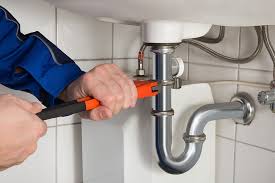How Do I Locate a Hidden Water Leak Within My Walls

Are you tired of playing hide-and-seek with a relentless water leak lurking within your walls? Well, buckle up, because we've got the ultimate guide to help you locate and conquer that sneaky culprit.
From the telltale signs to the essential tools, we'll walk you through the step-by-step process of investigating and resolving hidden water leaks.
So, put on your detective hat, grab your trusty toolkit, and get ready to unveil the source of those mysterious damp patches once and for all.
Common Signs of a Hidden Water Leak
One of the most common signs of a hidden water leak is an unexplained increase in your water bill. If you notice a sudden spike in your monthly water expenses, it could be an indication that water is being wasted somewhere in your home.
Another sign to look out for is the sound of running water when all faucets and appliances are turned off. If you hear water flowing even when everything should be quiet, there may be a leak behind your walls.
Additionally, damp or wet spots on your walls, floors, or ceilings that cannot be attributed to any spills or accidents should not be ignored. These could be signs that water is seeping through from a hidden leak.
Keep an eye out for these common indications to help locate a hidden water leak in your home.
Tools and Equipment for Detecting Water Leaks
To detect water leaks, you'll need specific tools and equipment. The first tool you'll need is a moisture meter, which measures the moisture content in the walls. This can help you pinpoint the location of the leak.
Another essential tool is a thermal imaging camera, which detects temperature differences in the walls caused by water leakage. This allows you to identify hidden leaks without damaging the walls.
An acoustic leak detector is also helpful, as it can detect the sound of water running through pipes behind the walls.
Additionally, you'll need a borescope, a flexible camera that can access tight spaces and provide visual confirmation of the leak.
Finally, a water pressure gauge is necessary to measure the pressure in your pipes and identify any abnormalities that may indicate a leak.
With these tools, you'll be well-equipped to locate and fix hidden water leaks within your walls.
fk
Step-by-Step Guide to Investigating Water Leaks in Walls
Using specific tools and equipment, you can easily investigate potential water leaks in your walls.
Start by visually inspecting the affected area for any signs of water damage such as discoloration, peeling paint, or mold growth.
Next, use a moisture meter to measure the moisture levels in the walls. If the meter detects higher than normal moisture levels, it indicates a possible water leak.
Another effective method is to use an infrared camera to detect temperature differences and identify areas where water might be leaking.
Additionally, you can perform a simple dye test by adding a few drops of food coloring to the toilet tank and checking if the colored water appears in the walls.
If you notice any of these signs, it's time to call a professional plumber for further investigation and necessary repairs.
Professional Help: When to Call a Plumber for Hidden Water Leaks
If you're experiencing unexplained water damage or a sudden increase in your water bill, it may be time to call a professional plumber for help with locating and repairing any hidden leaks. A plumber has the expertise and specialized equipment to accurately detect and fix water leaks within your walls.
Here are five reasons why calling a plumber is the right choice:
- Experience: Plumbers have years of experience in dealing with various plumbing issues, including hidden leaks.
- Equipment: Plumbers use advanced tools such as leak detection devices and thermal imaging cameras to locate leaks efficiently.
- Expertise: Plumbers have the knowledge to assess the extent of the damage and provide the most effective repair solution.
- Time-saving: Hiring a professional plumber saves you time and effort in trying to locate and fix the leak on your own.
- Long-term solutions: Plumbers not only fix the immediate problem but also provide long-term solutions to prevent future leaks.
Conclusion
In conclusion, don't let a hidden water leak continue to lurk in the shadows of your walls. Take action and become a leak detective, armed with your trusty tools and keen observation skills.
Uncover the secrets that lie beneath the surface and bring forth a wave of relief. With every step, imagine yourself as a fearless explorer, navigating the treacherous terrain of your home.
And remember, if the journey becomes too treacherous, seek the guidance of a professional plumber to ensure your victory over the elusive water leak.
Are you tired of playing hide-and-seek with a relentless water leak lurking within your walls? Well, buckle up, because we've got the ultimate guide to help you locate and conquer that sneaky culprit. From the telltale signs to the essential tools, we'll walk you through the step-by-step process of investigating and resolving hidden water leaks.…
Recent Posts
- Is Stamped Concrete Cheaper than Regular Concrete? Debunking Myths with Columbus Stamp Concrete
- My Insurance Agent TX Urges Drivers in Midland Odessa to Opt for Adequate Auto Liability Coverage Over State Minimums
- Celebrate Mom with Exquisite Flowers: Mothers Day Flowers
- Why Partnering with a Local Marketing Agency is Essential for Website Development Success
- Why Partnering with a Local Marketing Agency is Essential for Website Development Success
